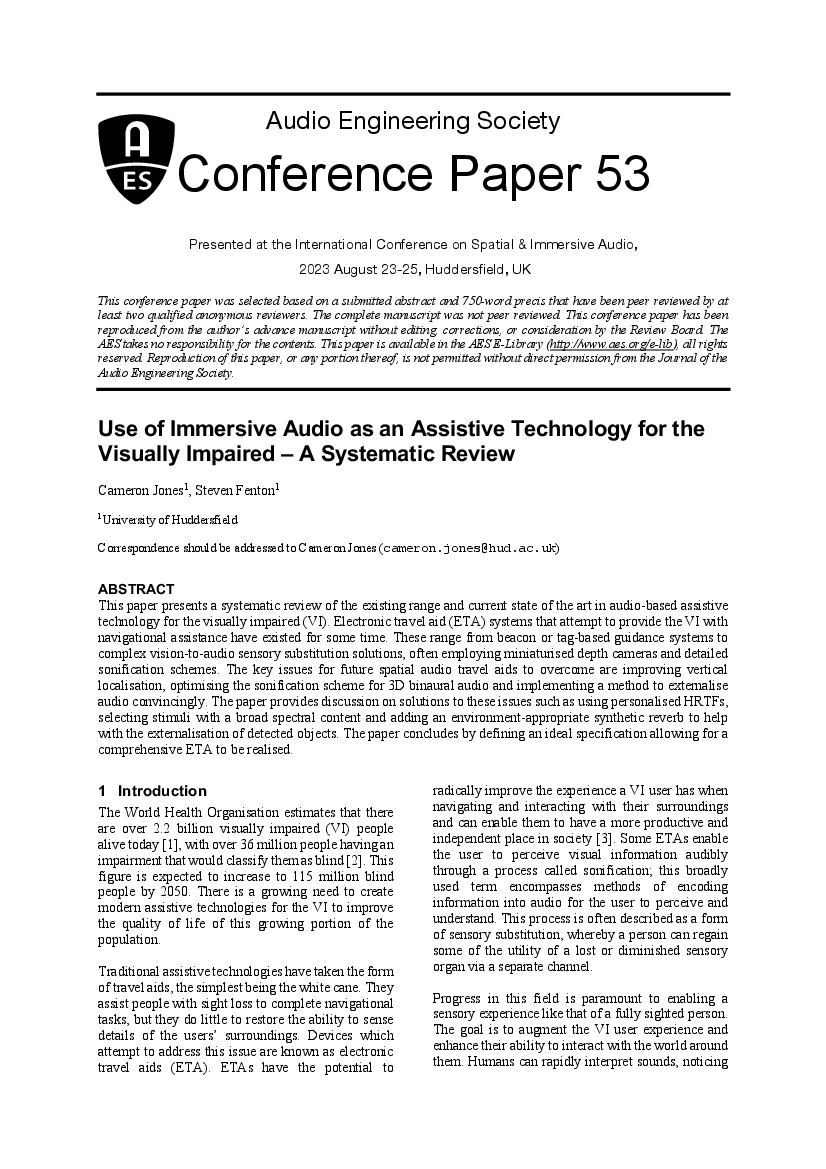Home / Publications / E-library page
You are currently logged in as an
Institutional Subscriber.
If you would like to logout,
please click on the button below.
Home / Publications / E-library page
Only AES members and Institutional Journal Subscribers can download
This paper presents a systematic review of the existing range and current state of the art in audio-based assistive technology for the visually impaired (VI). Electronic travel aid (ETA) systems that attempt to provide the VI with navigational assistance have existed for some time. These range from beacon or tag-based guidance systems to complex vision-to-audio sensory substitution solutions, often employing miniaturised depth cameras and detailed sonification schemes. The key issues for future spatial audio travel aids to overcome are improving vertical localisation, optimising the sonification scheme for 3D binaural audio and implementing a method to externalise audio convincingly. The paper provides discussion on solutions to these issues such as using personalised HRTFs, selecting stimuli with a broad spectral content and adding an environment-appropriate synthetic reverb to help with the externalisation of detected objects. The paper concludes by defining an ideal specification allowing for a comprehensive ETA to be realised.
Author (s): Jones, Cameron; Fenton, Steven
Affiliation:
University of Huddersfield; University of Huddersfield
(See document for exact affiliation information.)
Publication Date:
2023-08-06
Import into BibTeX
Session subject:
Paper
Permalink: https://aes2.org/publications/elibrary-page/?id=22165
(322KB)
Click to purchase paper as a non-member or login as an AES member. If your company or school subscribes to the E-Library then switch to the institutional version. If you are not an AES member Join the AES. If you need to check your member status, login to the Member Portal.

Jones, Cameron; Fenton, Steven; 2023; Use of Immersive Audio as an Assistive Technology for the Visually Impaired – A Systematic Review [PDF]; University of Huddersfield; University of Huddersfield; Paper 53; Available from: https://aes2.org/publications/elibrary-page/?id=22165
Jones, Cameron; Fenton, Steven; Use of Immersive Audio as an Assistive Technology for the Visually Impaired – A Systematic Review [PDF]; University of Huddersfield; University of Huddersfield; Paper 53; 2023 Available: https://aes2.org/publications/elibrary-page/?id=22165